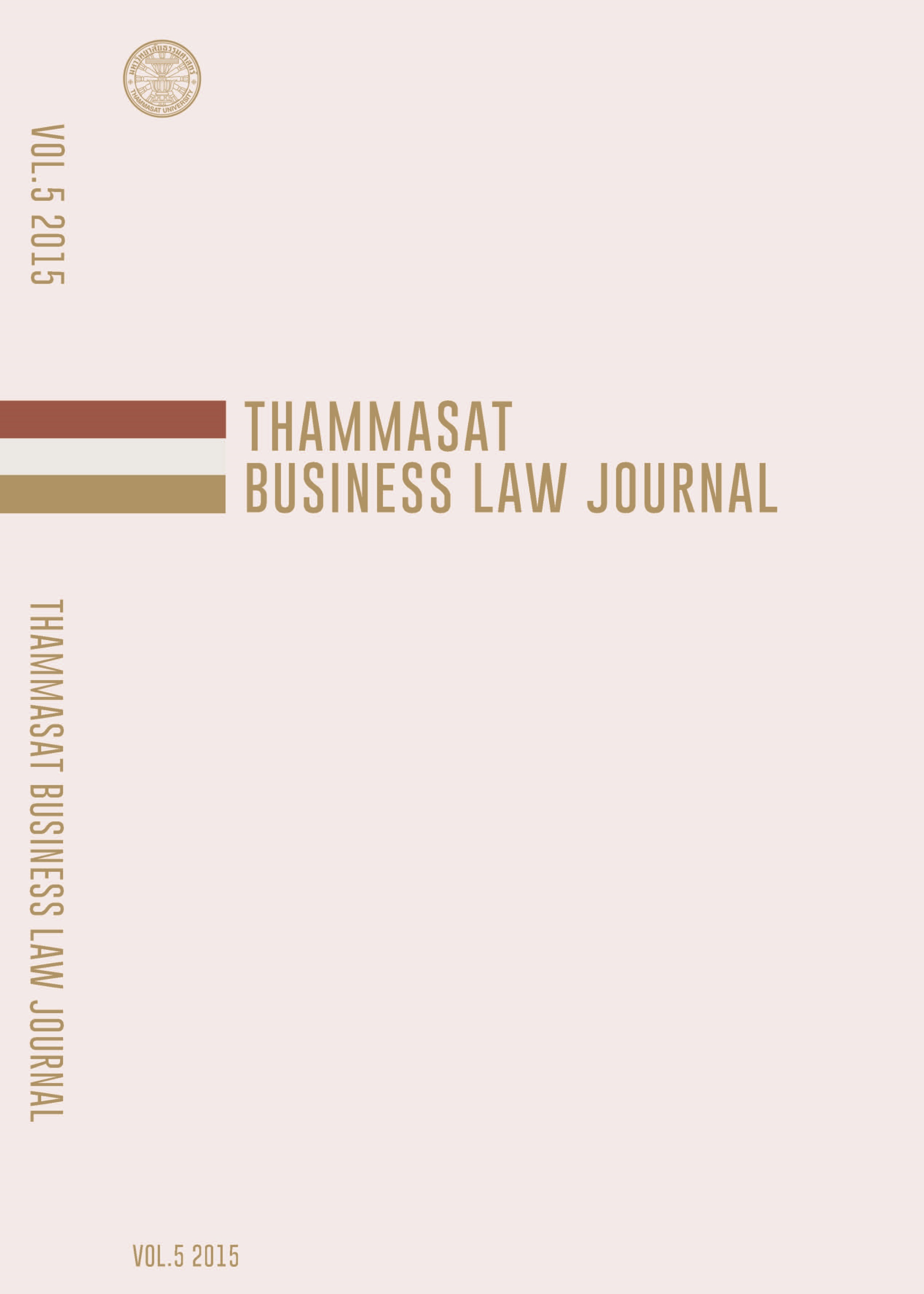IDENTIFICATION AND CONTROL OF FOOD-BORNE ILLNESSES UNDER THE FOOD ACT B.E. 2522
Main Article Content
Abstract
As commonly known that food is one of the basic bodily needs, consumers have the right to expect that food they purchase and consume will be safe and of high quality. The government agencies, in turn, should take measure to ensure that all food, whether locally produced or imported, freely sold on markets, is safe and consistent with national food safety standard.
For domestic consumption, Food and Drug Administration (FDA) has been authorized by the Food Act B.E. 2522 to protect and prevent consumers from food hazards. However, the Act has failed to serve the Thai FDA officers with appropriate tool to detect and control of the food hazards in every part of Thailand. Detecting and controlling food safety problems largely depend upon whether it can follow a food product’s movement through the food supply chain. In this case, the Act should have adequate tool to access all relevant information about food production and distribution to support identification and control of food-borne illnesses. Notwithstanding, Section 43 of the Act does not allow the Thai FDA officers to acquire those information held by the food operators. At the same time, the Act lacks of record-keeping requirement to identify a food product’s movement across the food supply chain.
After studying the principles of modern food control system and all relevant laws in both the UK and the US, the problems of identification and control of food hazards under the Food Act B.E. 2522 should be solved by expanding the competent officer’s control powers covered most areas of the Thai FDA’s operations. The inspectional authority under Section 43 of the Act, thus, must be expanded to include the ability to request the food-related information from food business operators. At the same time, by the virtue of Section 5 and Section 6(7) of the Act, the Act should set the provision to establish a new food business operators’ responsibility for maintaining information that can identify food product’s movement throughout the food supply chain. And hence, food-borne diseases will be fully detected and controlled.
Article Details
References
FAO. Assuring Food Safety And Quality: Guidelines For Strengthening National Food Control Systems. FAO Food and Nutrition Paper 76. Rome: FAO, 2003.
FAO/WHO. Principles for Traceability/Product Tracing as a Tool within a Food Inspection and Certification System (CAC/GL 60-2006). Joint FAO/WHO Food Standards Programme. FAO. Rome: n.p., 2006.
คณะกรรมการอาหารแห่งชาติ. กรอบยุทธศาสตร์ การจัดการด้านอาหารของประเทศไทย. พิมพ์ครั้งที่ 1. กรุงเทพฯ: สำนักงานกองทุนสนับสนุนการสร้างเสริมสุขภาพ. ม.ป.ป. (The National Food Commission. Strategies of Food Management Program. 1st. Bangkok: Thai Health Promotion Foundation, n.d.)
FAO. Foodborne Diseases: Situation of Diarrheal Diseases in Thailand. in FAO/WHO Regional Conference on Food Safety for Asia and the Pacific. Malaysia: n.p., 2004.
FSA. Traceability in the Food Chain: A preliminary study. n.p.: FSA, 2002.
USFDA. “FDA’s Draft Approach for Designating High-Risk Foods as Required by Section 204 of FSMA February 2014.” FDA.
USFDA. “Guidance for Industry: FDA Records Access Authority Under Sections 414 and 704 of the Federal Food, Drug, & Cosmetic Act.” FDA.
World Bank, Module 12: Global Markets, Global Challenges; Improving Food Safety and Traceability While Empowering Smallholders through ICT, in Information and Communications for Development 2012: Maximizing Mobile (2012),


